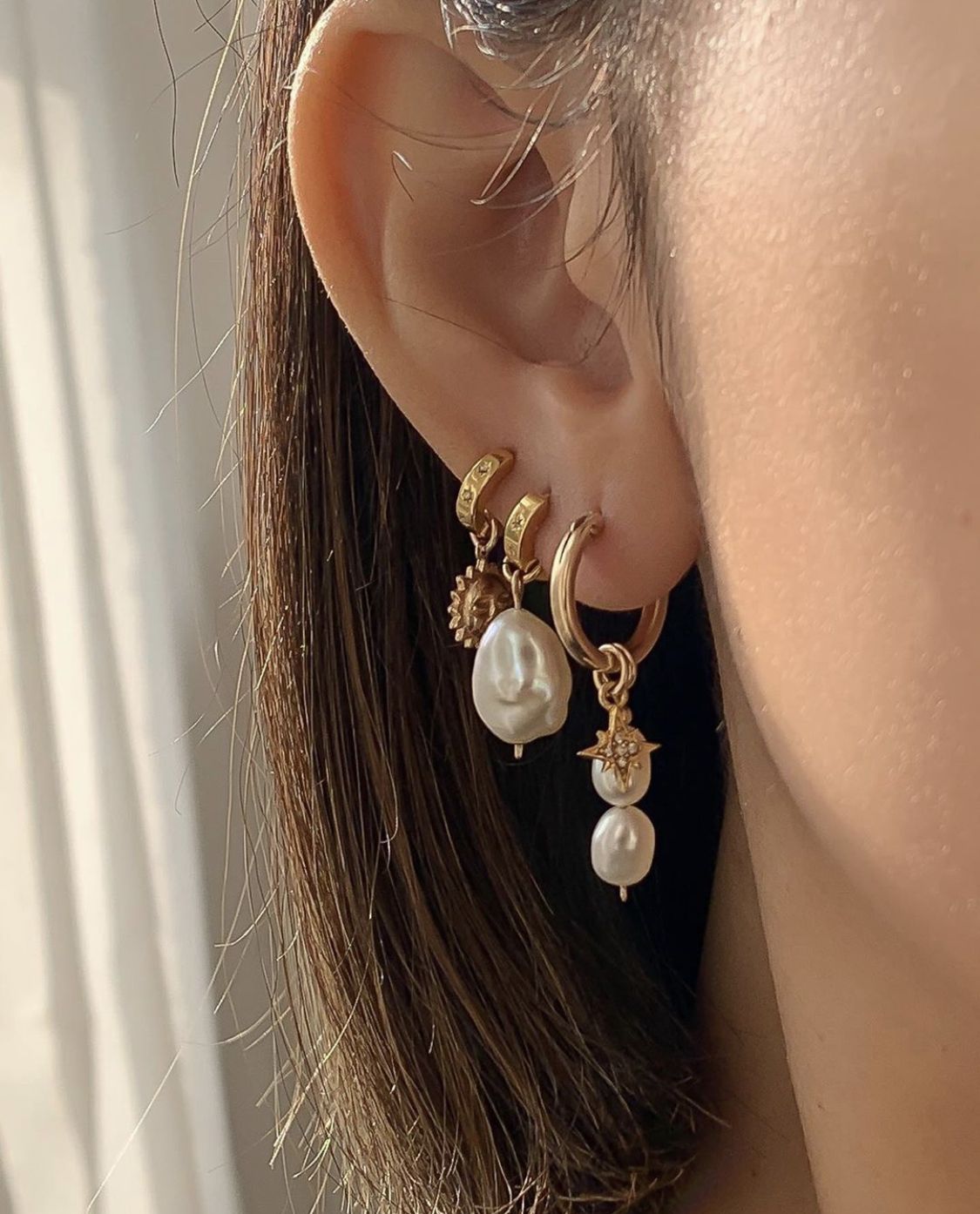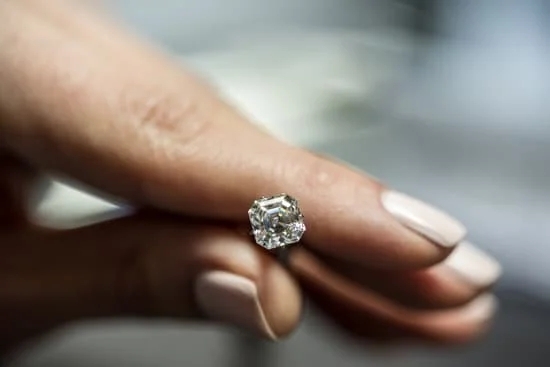The history of art deco jewelry is a fascinating journey through the glamorous and stylish world of the Art Deco movement. This era, which spanned from the 1920s to the 1930s, left an indelible mark on the world of jewelry design, influencing trends that are still celebrated to this day. From the bold geometric shapes to the vibrant colors and exquisite craftsmanship, Art Deco jewelry continues to captivate collectors and enthusiasts around the world.
During the Art Deco period, jewelry design experienced a dramatic shift influenced by modernist art movements, changing social dynamics, and revolutionary advancements in technology. This led to an explosion of creativity and innovation in jewelry design that continues to inspire contemporary designers.
In this article, we will delve into the history of Art Deco jewelry, exploring its origins, characteristics, notable designers, materials used, rise and fall in popularity, as well as its enduring legacy in modern fashion. We will also provide insights on how to identify and appreciate authentic Art Deco pieces. Whether you are a seasoned collector or simply intrigued by this captivating era in jewelry design, join us as we uncover the allure of Art Deco jewelry.
The Influence of the Art Deco Movement on Jewelry Design
The Art Deco movement, which emerged in the 1920s, had a significant influence on jewelry design. This period marked a shift away from the ornate and intricate designs of the Art Nouveau era, towards more streamlined and geometric forms. The bold and dynamic aesthetic of the Art Deco movement was reflected in the jewelry created during this time, resulting in pieces that were modern, sophisticated, and highly stylized.
During the Art Deco era, jewelry designers drew inspiration from contemporary art movements such as Cubism and Futurism, as well as from ancient Egyptian, African, and East Asian art. These diverse influences contributed to the unique and eclectic style of Art Deco jewelry. The use of bold colors, intricate patterns, and innovative materials also set this period apart from previous design movements.
The influence of the Art Deco movement on jewelry design can be seen in the emphasis on symmetry, sharp angles, and striking contrasts. Pieces often featured geometric shapes such as circles, squares, triangles, and rectangles, as well as linear patterns and sleek curves. This departure from traditional motifs resulted in jewelry that was both visually striking and reflective of the modern spirit of the time.
- The use of bold colors
- Intricate patterns
- Innovative materials
- Emphasis on symmetry
- Sharp angles
- Striking contrasts
Characteristics of Art Deco Jewelry
Art Deco jewelry is known for its distinctive characteristics that set it apart from other styles. One of the most prominent features of Art Deco jewelry is its use of geometric shapes and bold, striking designs.
This reflects the broader influence of the Art Deco movement, which encompassed not only jewelry design but also architecture, fashion, and visual arts. The clean lines and symmetrical patterns of Art Deco jewelry are a reflection of the modernist ideals that were prevalent during the 1920s and 1930s.
Another key characteristic of Art Deco jewelry is its use of vibrant colors and contrasting materials. Many pieces incorporate colorful gemstones such as emeralds, rubies, sapphires, and diamonds, often set in platinum or white gold to enhance their brilliance. In addition to gemstones, popular materials used in Art Deco jewelry include jade, onyx, coral, and lapis lazuli. These materials were often combined in innovative ways to create visually striking pieces that captured the spirit of the era.
Art Deco jewelry also frequently features motifs inspired by ancient civilizations and exotic cultures, reflecting the fascination with archaeology and travel that characterized the period. Egyptian pyramids, Aztec symbols, and Indian influences were all common themes in Art Deco jewelry design. These motifs added an element of escapism and glamour to the pieces, making them highly sought after during their heyday.
| Characteristic | Description |
|---|---|
| Geometric Shapes | Clean lines and symmetrical patterns reflecting modernist ideals |
| Vibrant Colors | Incorporation of colorful gemstones like emeralds, rubies,sapphires,set in platinum or white gold |
| Ancient Civilization Motifs | Inspiration drawn from Egyptian pyramids,Aztec symbols ,Indian influences. |
Notable Art Deco Jewelry Designers
During the Art Deco period, many notable designers emerged who played a significant role in shaping the world of art deco jewelry. These designers were innovative, experimental, and often drew inspiration from various sources, including architecture, technology, and the global events of the time.
Coco Chanel
One of the most influential figures in the world of fashion and jewelry during the Art Deco era was Coco Chanel. She revolutionized the way women dressed and accessorized with her bold and modern designs. Chanel’s use of geometric shapes, sleek lines, and contrasting colors set her apart as an iconic figure in the history of art deco jewelry.
René Lalique
René Lalique was another prominent figure in the art deco movement. Known for his incredible skill in glassmaking and jewelry design, Lalique’s work often featured naturalistic motifs such as flowers, birds, and other organic elements. His innovative use of materials and intricate designs made him a pioneer in art deco jewelry.
Van Cleef & Arpels
The renowned jewelry house Van Cleef & Arpels also made a significant impact on art deco jewelry design. Their use of vibrant colored gemstones such as emeralds, rubies, and sapphires combined with intricate craftsmanship and bold geometric patterns created timeless pieces that continue to be coveted today.
These notable designers have left an indelible mark on the history of art deco jewelry through their groundbreaking designs, innovative techniques, and lasting influence on modern fashion trends. Their contributions continue to inspire contemporary artisans and collectors alike.
Popular Gemstones and Materials Used in Art Deco Jewelry
Art Deco jewelry was known for its use of bold colors, geometric shapes, and contrasting materials. Some of the most popular gemstones used in Art Deco jewelry include diamonds, emeralds, sapphires, and rubies. These precious stones were often set in platinum or white gold to create a striking contrast against the colorful gemstones. Additionally, other semi-precious gemstones such as jade, onyx, and coral were also commonly used in Art Deco jewelry.
In addition to gemstones, Art Deco jewelry also made use of innovative materials such as enamel, lacquer, and glass. These materials were incorporated into intricate designs to add depth and texture to the pieces. Furthermore, the use of vibrant colored enamel allowed for the creation of intricate patterns and designs that became emblematic of the Art Deco style.
One notable characteristic of Art Deco jewelry was its use of bold shapes and lines. This was achieved through the use of geometrically cut gemstones such as emerald-cut diamonds, baguette-cut sapphires, and cabochon-cut rubies. The clean lines and symmetrical patterns seen in Art Deco jewelry reflected the influence of modern art movements such as Cubism and Futurism during that time.
| Gemstone | Material |
|---|---|
| Diamonds | Platinum or White Gold |
| Emeralds | Enamel |
| Sapphires | Lacquer |
| Rubies | Glass |
The Rise and Fall of Art Deco Jewelry
The Rise of Art Deco Jewelry
Art Deco jewelry experienced a significant rise in popularity during the 1920s and 1930s, coinciding with the broader Art Deco movement that influenced various aspects of design and culture. The style was embraced by those seeking to break away from the elaborate and ornate designs of the preceding Victorian era. Art Deco jewelry reflected the modern, sleek, and geometric aesthetic of the time, making it a popular choice for those who wanted to showcase their affinity for contemporary design.
The Fall of Art Deco Jewelry
Despite its initial popularity, the reign of Art Deco jewelry eventually came to an end as a result of several factors. The onset of World War II led to economic instability, which in turn affected the production and availability of luxury items such as fine jewelry.
Furthermore, shifting social attitudes also played a role in the decline of Art Deco jewelry’s prominence. With changing tastes and preferences, consumers began to seek out different styles that were more reflective of the post-war era.
The Revival of Art Deco Jewelry
Although there was a decline in the popularity of Art Deco jewelry after its initial heyday, it has since experienced a revival in modern times. In recent years, there has been a renewed interest in vintage and antique pieces from the Art Deco period.
This resurgence can be attributed to a growing appreciation for the craftsmanship and design principles that define this iconic style. Additionally, contemporary designers have drawn inspiration from the history of art deco jewelry to create new pieces that pay homage to this influential era in jewelry design.
The Revival of Art Deco Jewelry in Modern Fashion
In today’s fashion landscape, Art Deco jewelry has made a notable comeback, taking center stage on runways, red carpets, and in everyday wear. Designers are incorporating Art Deco elements into their collections, from geometric shapes and clean lines to bold contrasts and intricate detailing. This revival of Art Deco jewelry is not only a nod to the past but also a celebration of its enduring appeal.
To better appreciate the revival of Art Deco jewelry in modern fashion, it is important to understand its historical significance and impact on design. The history of art deco jewelry dates back to the 1920s and 1930s, during a period of artistic innovation and social change. As such, the revival of this style serves as a tribute to its rich heritage while simultaneously breathing new life into an iconic era.
Notable examples of the revival of Art Deco jewelry can be seen in contemporary pieces that feature sleek lines, bold colors, and striking geometric motifs. From statement necklaces to intricate brooches and dazzling earrings, modern interpretations of Art Deco jewelry capture the spirit of this influential movement while adding a fresh perspective for today’s fashion enthusiasts.
How to Identify and Appreciate Authentic Art Deco Jewelry
Art Deco jewelry holds a significant place in the history of jewelry design, known for its striking geometric shapes, bold colors, and intricate patterns. To truly appreciate authentic Art Deco jewelry, it is important to understand the key characteristics and styles that define this era.
One of the defining features of Art Deco jewelry is its use of geometric shapes and lines, reflecting the influence of the Art Deco movement on design aesthetics. From symmetrical patterns to angular forms, authentic Art Deco pieces often feature strong lines and bold contrasts. Additionally, Art Deco jewelry often incorporates materials such as platinum, diamonds, sapphires, emeralds, and rubies, reflecting the opulence and luxury associated with this period.
Another key aspect in identifying authentic Art Deco jewelry is the use of innovative techniques and craftsmanship. During the 1920s and 1930s, advancements in jewelry making allowed for intricate metalwork, filigree detailing, and precise gemstone settings. The combination of these elements resulted in stunning pieces that are highly coveted by collectors and enthusiasts today.
To appreciate authentic Art Deco jewelry is also to understand its historical significance in the fashion industry. The era marked a time of social change and artistic innovation, shaping not only jewelry design but also influencing architecture, fashion, and visual arts. By learning about the historical context and influences that shaped Art Deco jewelry, one can gain a deeper appreciation for its enduring legacy in the world of fashion and design.
Exploring the Enduring Legacy of Art Deco Jewelry in the Fashion Industry Today
In conclusion, the history of art deco jewelry has left a lasting impact on the fashion industry today. The Art Deco movement not only revolutionized jewelry design, but also influenced architecture, fashion, and graphic design during its heyday in the 1920s and 1930s. The geometric shapes, bold colors, and luxurious materials characteristic of art deco jewelry continue to inspire contemporary designers and captivate collectors around the world.
Despite experiencing a decline in popularity after World War II, art deco jewelry has seen a revival in modern fashion. Designers and consumers alike appreciate the elegance and sophistication of art deco pieces, as well as their timeless appeal. This resurgence has sparked renewed interest in authentic art deco jewelry and has led to a renaissance in craftsmanship that honors the legacy of this influential period in the history of jewelry design.
As we continue to admire and wear art deco jewelry today, it is important to understand how to identify and appreciate authentic pieces. Whether through intricate metalwork, vibrant gemstones, or iconic motifs such as sunbursts and chevron patterns, genuine art deco jewelry reflects the innovation and creativity of its era. By educating ourselves about the characteristics of art deco jewelry, we can fully appreciate its enduring legacy in the fashion industry.
Frequently Asked Questions
How Can You Tell if Jewelry Is Art Deco?
Jewelry can be identified as Art Deco based on its design elements. Look for geometric shapes, bold colors, and symmetrical patterns. Art Deco jewelry often features intricate details and the use of materials like platinum, diamonds, sapphires, and emeralds.
What Is the Most Famous Art Deco Jewelry?
One of the most famous pieces of Art Deco jewelry is the Tutti Frutti bracelet by Cartier. This colorful and vibrant bracelet features carved gemstones in a variety of shapes, including rubies, sapphires, and emeralds. It perfectly captures the essence of the Art Deco style with its bold design and use of contrasting colors.
What Are the Characteristics of Art Deco Jewelry?
The key characteristics of Art Deco jewelry include geometric shapes such as squares, rectangles, and triangles. Symmetry and angular lines are also common in Art Deco pieces.
Additionally, the use of vibrant colored gemstones, along with the contrast between diamonds and black onyx or other dark stones, is a hallmark of this style. Overall, Art Deco jewelry is known for its boldness, sophistication, and modernity.

Welcome to my jewelry blog! My name is Sarah and I am the owner of this blog.
I love making jewelry and sharing my creations with others.
So whether you’re someone who loves wearing jewelry yourself or simply enjoys learning about it, be sure to check out my blog for insightful posts on everything related to this exciting topic!





